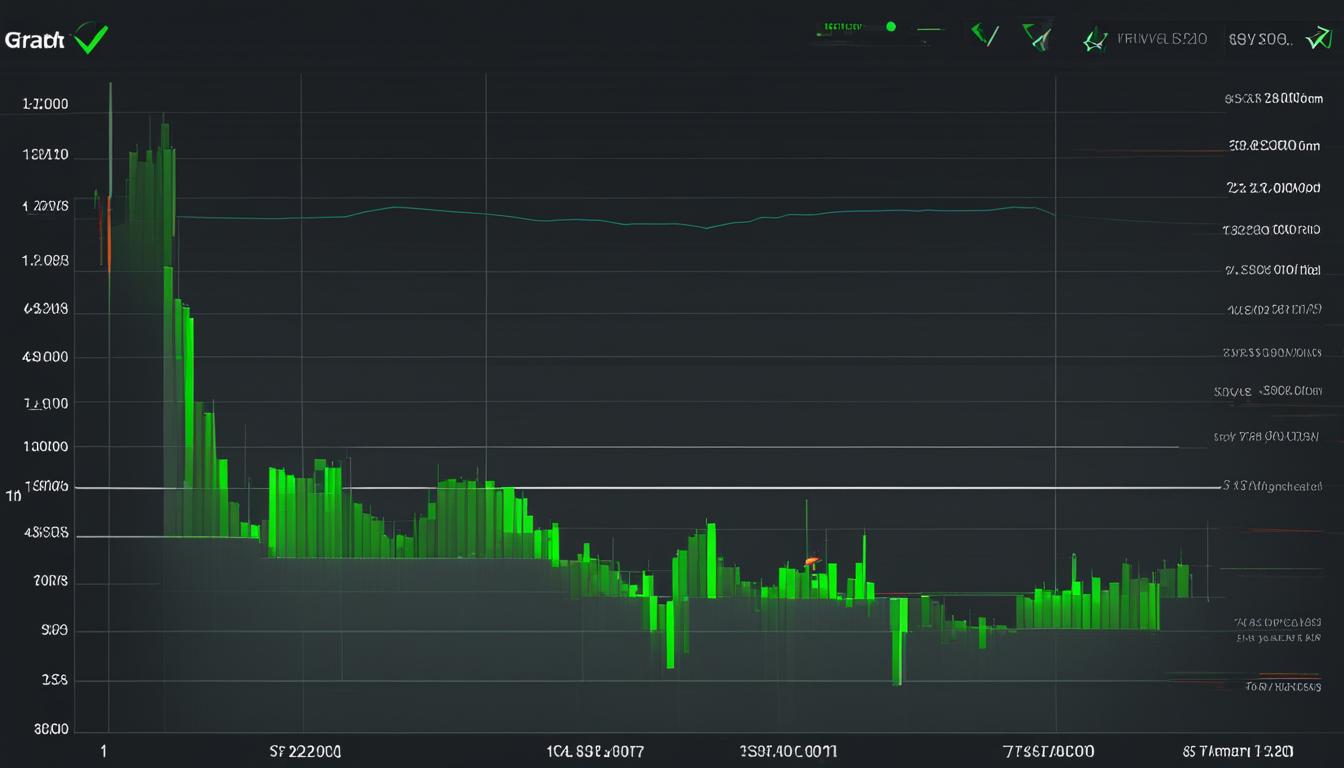Stock Market Rotation: Which Sectors Will Shine This Summer?

Introduction
Understanding stock market rotation is crucial for investors looking to optimize their portfolios. This strategy involves shifting investments between different sectors based on market conditions and economic cycles, aiming to capitalize on the varying performance of these sectors over time.
Identifying the right sectors to invest in during different phases of the market, including the summer, can significantly impact your returns. The summer months often bring unique opportunities and challenges due to seasonality. For instance, some sectors may thrive due to increased consumer activity, while others might face headwinds.
Seasonality plays a vital role in shaping stock market rotation strategies. Investors must consider how historical trends and market behaviors during summer can influence their investment decisions. By analyzing past performance and understanding current market dynamics, you can better position your portfolio to take advantage of sector-specific trends.
For those looking to deepen their knowledge in trading techniques and broker comparisons, resources like momentum trading techniques can provide valuable insights on how to unleash your potential in the stock market with momentum trading. Additionally, it’s essential to compare different broker types and find the perfect match for your trading goals. Finally, if you are considering transitioning from paper trading to real money trading, it’s crucial to understand the complexities involved and weigh the pros and cons before stepping out of your comfort zone.
Understanding Stock Market Rotation and Sector Performance
Stock market rotation refers to the strategic movement of investments among sectors based on the phases of the broader business cycle. This concept is pivotal for investors looking to capitalize on the varying performance of different sectors throughout economic shifts.
Sector Rotation Explained
Sector rotation involves the active adjustment of portfolio allocations between different sectors in response to changing market conditions. Investors seek to exploit sectors expected to outperform during specific stages of the economic cycle—expansion, contraction, or recovery.
- During expansion, cyclical sectors like technology and consumer discretionary often thrive.
- In periods of contraction, defensive sectors such as utilities and healthcare typically provide stability.
- Recovery phases might see a resurgence in financials and industrials as economic activity picks up.
Understanding these dynamics allows investors to better position their portfolios, aiming for optimal returns while managing risks.
For deeper insights into evolving market strategies, you might find this analysis on How Options Trading Changed In The Last Decades insightful. It explores the evolution of the market with an in-depth analysis on how options trading has changed over time, uncovering key trends and changes in the US.
By recognizing which sectors are likely to perform well during each stage of the economic cycle, you can make informed decisions about when to rotate investments. This proactive approach can potentially enhance your portfolio’s overall performance.
You can also explore additional strategies by mastering techniques like rolling options to maximize profits and fine-tune your trading tactics. Rolling options can be a powerful tool in your arsenal that allows you to adjust your positions and adapt to changing market conditions effectively.
Analyzing Historical Sector Trends: Lessons from Past Summers
Exploring the historical performance of key sectors during summer periods can reveal recurring patterns that inform investment strategies. By analyzing past data, you can identify which sectors tend to outperform and underperform during the summer months.
Recurring Patterns in Sector Performance
- Technology: Historically, the technology sector often gains momentum during the summer. Innovations and product launches frequently occur in this period, boosting investor confidence.
- Utilities: Known for their stability, utility stocks generally perform consistently throughout the year, including summer. Their defensive nature makes them attractive during times of uncertainty.
- Consumer Discretionary: This sector sometimes shows mixed performance in summer. While some consumer goods see increased sales due to holidays and travel, others may not experience significant seasonal impact.
- Energy: Energy stocks often face challenges during summer due to reduced demand for heating oil and gas. This seasonal dip can make energy a less attractive sector during these months.
Notable Case Studies
- Summer 2020: During the pandemic’s peak, technology stocks surged as remote work and digital transformation accelerated. Companies like Zoom and Microsoft saw significant gains, exemplifying how external factors can amplify seasonal trends.
- Summer 2018: The utilities sector provided a safe haven amid trade war tensions. Investors flocked to utility stocks for their reliable dividends and low volatility.
Understanding these historical trends can enhance your summer stock market rotation strategy. For more insights on managing portfolio risks, check out Broker Errors: Types, Examples, Consequences, where you can uncover the most common types of broker errors and their consequences for your investments.
When examining historical trends, it’s essential to consider both historical volatility and implied volatility. For a deeper dive into these concepts, visit From the Past to the Future: Understanding Historical Volatility vs Implied Volatility, which explores the contrast between historical volatility and implied volatility, shaping your trading strategy based on past market trends and expected fluctuations.
Sector Opportunities and Risks for This Summer
1. The Utilities Sector: A Haven of Stability?
The utilities sector has long been regarded as a defensive area in the market, known for its stable income characteristics. This sector includes companies that provide essential services such as electricity, water, and gas—services that remain in demand regardless of economic cycles.
Role of the Utilities Sector
In times of market volatility, investors often turn to the utilities sector as a safe harbor. Utility stocks tend to offer consistent dividends, which can be particularly appealing during uncertain times. These companies typically have regulated income streams, ensuring steady revenue even when other sectors face downturns. For this reason, utility stocks are considered defensive stocks, providing stability in a diversified portfolio.
Investment Potential
One way to gain exposure to this sector is through the S&P 500 Utilities Select Sector SPDR ETF (XLU). This ETF tracks the performance of large-cap utility stocks within the S&P 500 index. It offers a diversified approach by including various utility companies, thus reducing individual stock risk.
Key Features of XLU
- Dividend Yield: Generally higher than average, providing regular income.
- Low Volatility: Less susceptible to market swings compared to other sectors.
- Regulated Earnings: Revenue stability due to regulatory frameworks.
Investors looking for stability might find the utilities sector particularly attractive during the summer months when market activity can be unpredictable.
Related Reading:
- Broker Scams: The Worst Scams Ever Revealed: Discover the true nature of broker scams in the U.S., including tips on how to keep your investments safe.
- What Is A Call Option?: Delve into the financial world with our comprehensive guide on Call Options.
- Master the Market with the RSI Indicator: A Trader’s Guide: Unlock the secrets of the RSI indicator and gain a strategic edge in the market.
- Call vs Put: The Ultimate Showdown in Options Trading – Which Side Will You Choose?: Dive into the world of options trading with our comprehensive guide on Call vs Put.
- Options Arbitrage Strategies: Do They Still Work in 2024?: Explore the ins and outs of options arbitrage strategies with us.
Understanding how to leverage these features can help you navigate summer stock market rotations effectively. Exploring options like XLU allows for a more balanced and less volatile investment strategy during this period.
2. Tech Innovations: Riding the Summer Momentum in the Technology Sector
The technology sector often presents substantial growth opportunities, especially during the summer months. This period can be characterized by increased consumer spending and heightened innovation. Companies leading key trends—such as artificial intelligence, cloud computing, and cybersecurity—tend to benefit significantly.
Key Growth Drivers:
- Artificial Intelligence (AI): Firms like NVIDIA and Alphabet are at the forefront of AI development, driving substantial revenue through the sale of sophisticated hardware and software solutions.
- Cloud Computing: Giants such as Amazon Web Services (AWS) and Microsoft Azure continue to expand their cloud offerings, capitalizing on the growing demand for remote work solutions and data storage.
- Cybersecurity: With rising cyber threats, companies like Palo Alto Networks and CrowdStrike offer essential services that ensure data protection and network security.
Potential Stocks & ETFs:
Individual Stocks:
- Apple Inc. (AAPL)
- Microsoft Corporation (MSFT)
- NVIDIA Corporation (NVDA)
ETFs:
- Technology Select Sector SPDR Fund (XLK)
- iShares U.S. Technology ETF (IYW)
Investors should remain vigilant about potential risks that could impact this sector’s performance. Market volatility, regulatory changes, and technological disruptions pose significant challenges. Balancing these growth stocks with defensive investments can provide a more robust portfolio strategy during the summer stock market rotation.
For neutral options strategies that complement tech investments, discover how you can boost your portfolio with neutral options strategies, providing a winning edge in the world of trading regardless of market conditions.
Understanding systematic versus unsystematic risk is also crucial; gain a solid grasp of these key financial concepts and navigate your investments wisely.
The technology sector’s combination of innovation and consumer demand makes it a compelling choice for investors looking to capitalize on summer momentum.
3. Healthcare Resilience: Navigating Summer Volatility in the Medical Sector
The healthcare sector is known for its defensive characteristics, making it an attractive option during periods of market volatility, such as the summer months. Investors often turn to healthcare stocks because they tend to be less sensitive to economic cycles compared to other sectors.
Defensive Characteristics of the Healthcare Sector
- Stability: Healthcare services and products are essential regardless of economic conditions, providing a steady demand.
- Regulatory Support: Government policies and regulations often favor the healthcare industry, offering additional layers of stability.
- Diverse Sub-Sectors: The sector includes pharmaceuticals, biotechnology, medical devices, and health insurance, which can mitigate risks through diversification.
Promising Healthcare Stocks for Sector Rotation Strategy
For those looking to capitalize on the summer stock market’s dynamics, considering specific healthcare stocks or ETFs is crucial. Here are a few examples:
- Johnson & Johnson (JNJ): A diversified healthcare giant with a strong track record in pharmaceuticals and consumer health products.
- UnitedHealth Group (UNH): A leading health insurer that benefits from rising healthcare costs and an aging population.
- iShares U.S. Healthcare ETF (IYH): Offers broad exposure to the U.S. healthcare sector, covering multiple sub-industries.
Investing in these options allows you to leverage the defensive nature of healthcare stocks while navigating potential summer volatility.
However, it’s important to understand that investing in any sector comes with its own set of risks. In order to make informed decisions and effectively manage your investments during periods of volatility like the summer months, it would be beneficial to explore more about options settlement, as well as comprehend how trading halts can impact options trading. These insights can help mitigate risks and navigate the complexities of options trading.
While it’s evident that the healthcare sector offers resilience during market fluctuations, it’s also worth considering the challenges it faces. Understanding why innovation in health care is so hard is crucial to identify potential roadblocks. Additionally, exploring the intricacies of the U.S. healthcare system and its impact on the industry’s dynamics can provide valuable insights for investors seeking long-term stability.
4. The Seasonal Challenges Faced by the Energy Sector in Summer
During the summer months, the energy sector often faces specific challenges mainly due to a decrease in demand for oil and gas. This seasonal weakness can be attributed to several factors:
- Reduced Heating Demand: Warmer temperatures lead to lower consumption of heating oil and natural gas.
- Maintenance Shutdowns: Many refineries schedule maintenance during this period, reducing overall production capacity.
- Increased Supply: An uptick in production combined with decreased demand often leads to an oversupply, putting downward pressure on prices.
To overcome these challenges, investors can consider alternative strategies:
- Diversifying within the Energy Sector: Focus on sub-industries that are less affected by seasonal variations, such as renewable energy or utility services.
- Utilizing ETFs: Energy-focused ETFs can offer broader exposure and help mitigate individual stock risk. For example, the S&P 500 Utilities Select Sector SPDR ETF provides a diversified portfolio of utility stocks that may offer more stability.
- Options Trading: Leveraging options can hedge against potential losses in the energy sector.
To deepen your understanding, explore resources like Differences Between Equity And Index Options and Unveiling the Hidden Power of Open Interest in Option Contracts. These guides will provide valuable insights for making informed investment decisions.
By adopting these strategies, you can better manage your exposure to the energy sector while capitalizing on specific opportunities within it.
Approaches to Effective Summer Stock Market Rotation
ETF Investment Strategies
ETFs (Exchange-Traded Funds) offer a flexible and efficient way to execute sector rotation strategies. By investing in sector-specific ETFs, you can easily shift your portfolio allocations in response to changing market conditions.
Offensive Positioning with Growth Sectors
During the summer, sectors like technology and healthcare often exhibit strong performance due to ongoing innovation and consistent demand. Consider ETFs such as the Technology Select Sector SPDR Fund (XLK) or the Health Care Select Sector SPDR Fund (XLV) for exposure.
Defensive Positioning with Stable Sectors
Defensive sectors like utilities provide stability during volatile periods. The Utilities Select Sector SPDR Fund (XLU) is an example of an ETF that offers exposure to this sector’s stable income characteristics.
Balanced Approach
A balanced approach combines both offensive and defensive positions within your portfolio. This strategy ensures that you are positioned to capitalize on growth opportunities while also protecting against downside risks. For instance:
- Growth Allocation: Allocate a portion of your investment into high-growth sectors like technology and healthcare.
- Stability Allocation: Balance this by investing in defensive sectors such as utilities and consumer staples.
Ongoing Monitoring and Adjustment
Regularly monitoring sector performance is crucial for effective summer stock market rotation. The dynamics of each sector can shift rapidly, making it important to adjust your portfolio as needed:
- Track Performance Metrics: Keep an eye on key performance indicators and economic data.
- Rebalance Periodically: Adjust your sector allocations based on updated market conditions to optimize returns.
By adopting these ETF investment strategies and maintaining a balanced approach, you can enhance your summer stock market rotation strategy. For more insights on managing investment risks, consider exploring the consequences of decreasing implied volatility. Additionally, comparing different trading approaches like FX Spot vs FX Options Trading can provide valuable perspectives for skilled traders in the US.
Conclusion
Using stock market rotation and sector performance can provide great opportunities for your summer investment strategies. However, it’s important to be careful and do thorough research.
It is crucial to have a well-diversified portfolio that takes into account both sector trends and individual stock selection criteria. Relying only on market timing techniques like sector rotation can be risky. Combining these strategies with a balanced approach will help reduce potential downsides.
To deepen your understanding of stock market rotation strategies, consider exploring these additional resources:
- Books: “Sector Rotation: The Ultimate Guide” by John Smith
- Websites: Options Quotes – Learn about comprehensive options quotes and gain insights into the world of financial trading.
- Podcasts: “Market Moves with John Doe”
Engaging with these materials will enhance your investment decisions this summer. A diversified approach, continuous monitoring, and a well-rounded knowledge base will set you on the path to success.
FAQs (Frequently Asked Questions)
What is stock market rotation and why is it relevant for investors?
Stock market rotation involves shifting portfolio allocations between different sectors based on market conditions. It is relevant for investors as it allows them to capitalize on sector performance during different phases of the business cycle.
How does sector rotation relate to the broader business cycle?
Sector rotation involves actively shifting portfolio allocations between different sectors based on market conditions, which is related to the broader business cycle as it reflects changes in economic conditions and investor sentiment.
What historical trends can be explored to identify recurring patterns in sector performance during summer?
Historical performance of key sectors during previous summer periods can be explored to identify any recurring patterns or themes that may influence sector rotation strategies in the summer months.
What potential risks and opportunities are associated with the utilities sector during the summer?
The utilities sector is known for its stable income characteristics and may serve as a defensive area in the market. Investors can evaluate the investment potential of funds that provide exposure to utility stocks, such as the S&P 500 Utilities Select Sector SPDR ETF.
What are some potential growth opportunities present in the technology sector during the summer months?
The technology sector presents growth opportunities during the summer months, particularly for innovative companies driving key trends. Investors can consider specific technology stocks or ETFs that could benefit from seasonal tailwinds.
What are some approaches that investors can take to implement successful sector rotation strategies using ETFs?
Investors can implement successful sector rotation strategies using ETFs by considering a balanced approach that combines both offensive and defensive sector positions. Ongoing monitoring and adjustment in response to changing sector dynamics throughout the summer months is also important.







